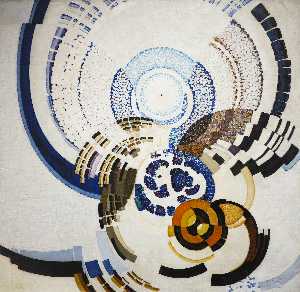Frantisek Kupka
Frantisek Kupka
Stílus: Expressionism; Symbolism; Art Nouveau; Orphism; Abstract Expressionism;
Hely: Opo?No
Született: 1871
Halál: 1957
Életrajz:
Early Life and Education
František Kupka, a renowned Czech painter and graphic artist, was born on September 23, 1871, in Opočno, eastern Bohemia, Austria-Hungary. From 1889 to 1892, he studied at the Academy of Fine Arts in Prague, focusing on historical and patriotic themes. Later, he enrolled at the Academy of Fine Arts in Vienna, concentrating on symbolic and allegorical subjects.
Artistic Evolution and Influences
Kupka's artistic style evolved from realism to pure abstract art, influenced by his involvement with Theosophy and Eastern philosophy. In 1894, he settled in Paris, attending the Académie Julian briefly and studying with Jean-Pierre Laurens at the École des Beaux-Arts.
Notable Works and Contributions
* The Colored One (65 x 54 cm, Solomon R. Guggenheim Museum, New York, United States), an abstract representation of a female nude, showcasing Kupka's bold mode of figural representation. * Around a Point (The Paris Museum of Modern Art), a piece that deviates from Kupka's usual blurring of boundaries, featuring defined borders and exploring the theories of light and color.
Exhibitions and Legacy
Kupka was a founding member of Abstraction-Création in 1931. His work was included in the exhibition "Cubism and Abstract Art" at the Museum of Modern Art in New York City in 1936. A retrospective of his work took place at the Galerie Mánes in Prague in 1946.
- View Frantisek Kupka's Artworks on Wikioo.org
- Explore Ms. Kupka between vertical (Abstract Expressionism)
- Discover more about František Kupka's life and work on Wikipedia: Wikipedia
Museums Featuring Frantisek Kupka's Work
* Solomon R. Guggenheim Museum (New York, United States) * The Paris Museum of Modern Art (Paris, France) * Galerie Mánes (Prague, Czech Republic) Kupka's legacy continues to inspire artists and art enthusiasts alike, with his pioneering work in abstract art and Orphic Cubism remaining a cornerstone of modern art history.














